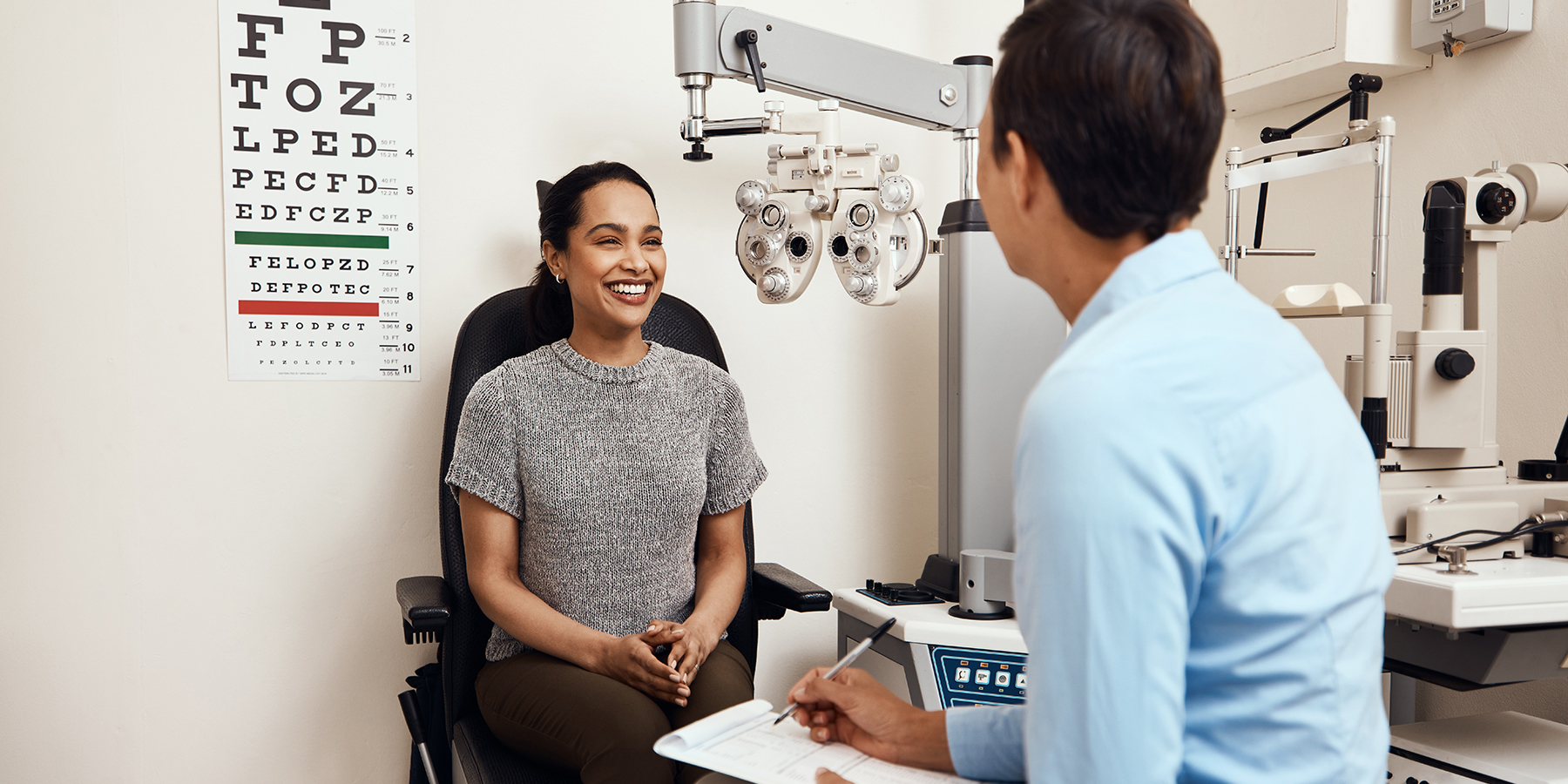
Why Annual Eye Exams Matter—Even if You Don't Wear Glasses
October is Blindness Awareness Month, a time dedicated to raising awareness about the challenges faced by the blind and visually impaired community while highlighting the importance of preventive eye care.
As we observe this important month, there's a crucial message that resonates for everyone: annual eye exams are essential for maintaining eye health, even if you have perfect vision and don't wear glasses.
The Hidden Reality of Vision Loss
According to the World Health Organization, more than 314 million people worldwide have severe visual impairment, including 37 million who are blind—and 80 percent of blindness is preventable. In the United States alone, an estimated 93 million adults have a high risk for serious vision loss, but only half visited an eye doctor in the past 12 months.
This gap in preventive care is particularly concerning because many eye diseases are common and can go unnoticed for a long time, with some eye problems showing no symptoms in their early stages. The only way to detect these silent threats is through comprehensive dilated eye exams performed by qualified eye care professionals.
Beyond 20/20 Vision: What Annual Exams Reveal
Many people mistakenly believe that having clear vision means their eyes are healthy. Nearly half of Americans ages 23–38 don't think they need an eye exam if their vision is clear, according to the American Optometric Association's Eye-Q Survey 2020.
However, having 20/20 vision doesn't necessarily mean your eyes are perfectly healthy, and more than one in four adults who currently wear glasses or contact lenses say their vision issues only developed later in life.
Annual comprehensive eye exams go far beyond determining if you need glasses. Through an eye exam, eye doctors can identify early warning signs and manifestations of systemic and chronic diseases including diabetes, high blood pressure, autoimmune diseases and cancers. One in five Americans report that an eye health professional detected or diagnosed a non-eye related health issue during their exam.
Early Detection Saves Sight
The power of early detection cannot be overstated when it comes to preserving vision. Consider these preventable conditions:
Glaucoma: Often called the “silent thief of sight,” glaucoma increases pressure inside the eyes and can damage the optic nerve, causing tunnel vision and blindness if not treated. Early detection is key to minimizing eye damage.
Diabetic Retinopathy: This condition causes damage to blood vessels in the back of the eye and is the leading cause of blindness in American adults. Early detection and treatment can prevent or delay blindness from diabetic retinopathy in 90% of people with diabetes.
Cataracts: The leading cause of vision loss in the United States, cataracts cause clouding of the lens but are highly treatable.
The Cost of Delayed Care
The economic and personal costs of delayed eye care are staggering. The economic cost of major vision problems is estimated to increase to $373 billion by 2050, while for more than half of American adults who didn't seek eye care, it was due to cost or lack of awareness.
However, prevention is far more cost-effective than treatment. Spectacle correction for refractive error and surgery for cataract are among the most cost-effective of all health-care interventions, yet access remains limited for many.
What to Expect During Your Annual Exam
A comprehensive eye exam includes multiple tests designed to assess both vision and eye health:
- Visual acuity test: Measures your ability to see details at specific distances.
- Refraction test: Determines if you need corrective lenses.
- Visual field test: Evaluates peripheral vision to detect blind spots.
- Dilated eye exam: Allows the doctor to examine the retina and optic nerve for signs of disease.
During the exam, your eye doctor can see behind your eyes and check for signs of health problems, potentially spotting conditions such as high blood pressure or diabetes.
Recommended Exam Frequency
The recommended frequency of eye exams varies based on age and risk factors: children should have at least one exam between ages 3–5, school-age children should have exams before first grade and annually thereafter. Adults with diabetes should have a dilated eye exam every year. Comprehensive eye examinations should be considered every 2 to 4 years for those under age 40, every 1 to 3 years for those aged 40 to 54, and every 1 to 2 years for those aged 55 to 64, even in the absence of visual or ocular symptoms.
As we observe Blindness Awareness Month, let this be your reminder to prioritize your eye health. Annual eye exams significantly reduce the risk of preventable blindness by identifying and treating eye diseases in their earliest stages, giving us the best chance at preserving current sight.
Don't wait for symptoms to appear—many sight-threatening conditions develop silently. Schedule your comprehensive eye exam today, and encourage your family and friends to do the same. In honoring Blindness Awareness Month, we can work together to reduce preventable vision loss and ensure that everyone has the opportunity to maintain healthy vision throughout their lives.
Remember: your eyes are windows not just to the world, but to your overall health. Make annual eye exams a priority, regardless of whether you currently wear glasses or experience vision problems. Your future self will thank you for this small but crucial investment in your long-term health and quality of life.










